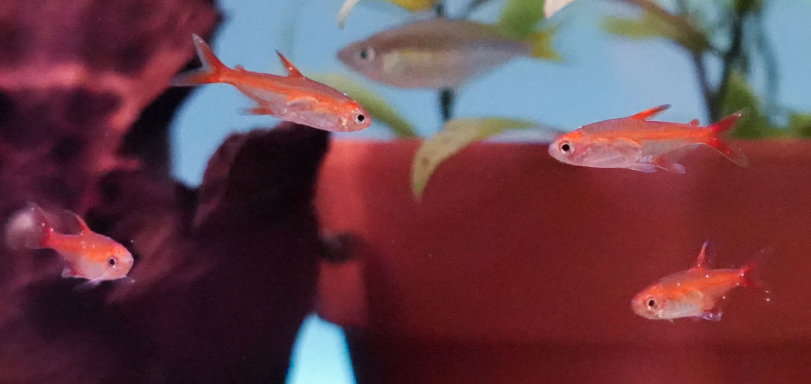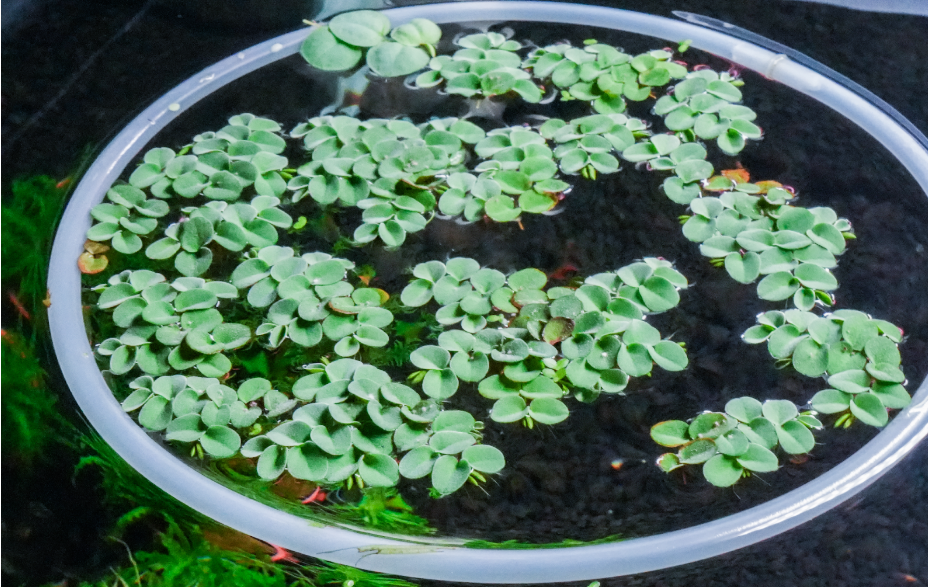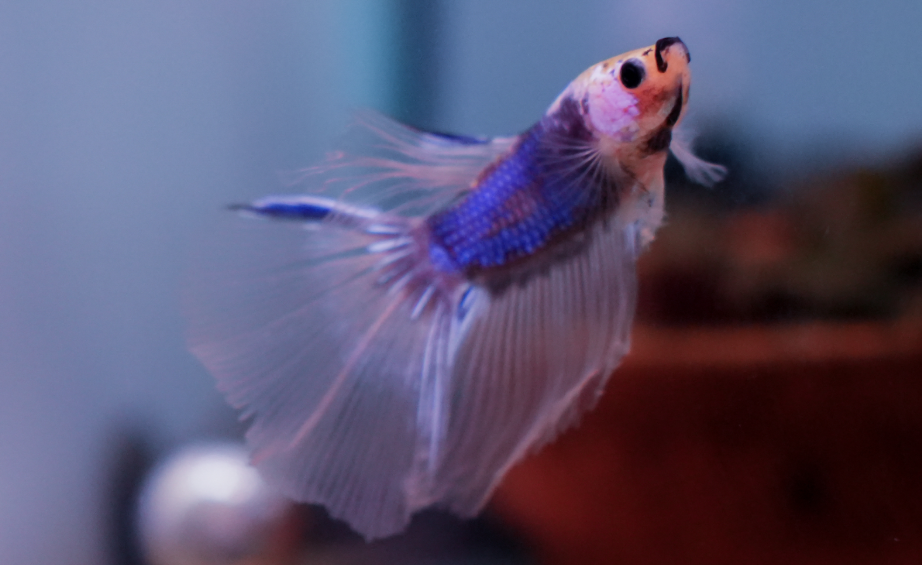How to Prevent and Treat Common Aquarium Diseases
Apr 7th 2025

Apr 7th 2025

Setting up an aquarium is fun, but fish need consistent care to stay healthy. Sometimes, despite all our efforts to keep an aquarium clean and fish properly fed, our fish get sick. Aquarium fish diseases are more common than you may suspect. From your smallest tetra to your largest koi, caring for your fish begins with understanding how these diseases work and doing everything you can to prevent and treat common aquarium diseases expediently.
Fish illnesses are rarely an isolated occurrence. Nearly every illness stems from some imbalance or problem in the fish tank, causing stress to the inhabitants and making them susceptible to infection. In some cases, ill fish (and the types of parasites they can potentially host) can go unnoticed for a long period of time. Of course, making an effort to avert disease from happening is so much more efficient than treating an illness in the aftermath. And while treating these illnesses is not impossible, it can be costly and time-consuming. If proper action isn't taken at the first signs of illness, some treatments may not be effective.
Every illness a fish gets can be traced back to one reason. Root causes can include, but are not limited to, the following:
Fish are not meant to live in water systems where conditions dramatically fluctuate. When the temperature changes, pH fluctuates to extremes, or nitrogenous waste builds up, a fish's immune system will suffer. Insufficient water quality damages the fish from the inside. Even minuscule ammonia or nitrite concentrations make it more difficult for the fish's gills to work, and prolonged exposure will cause irreparable damage.
Fish gills allow the bloodstream to absorb oxygen from the water, and if damaged, the entire respiratory system will have to work harder to absorb and distribute oxygen. This ultimately causes a slower metabolism, increased stress, and reduced resistance against bacterial, fungal, and parasite infections.
Stress does not only originate from water quality; it can also come from:
Prolonged stress affects your fish’s daily activities, including eating, movement, and respiration, making them more susceptible to infections and illnesses. Fish kept in a healthy, well-maintained, low-stress environment are less likely to fall ill. Many common fish diseases can be treated in a timely manner with a decent recovery chance while also protecting the remaining fish population within the aquarium.

The white specks on these Ember Tetras indicate that these fish have ich or white spot disease.
Even in a well-maintained tank, your freshwater fish can quickly run into serious health issues. Whether running a peaceful community tank or raising a single betta, some illnesses creep in quietly and do damage if you don’t catch them early.
Many fish diseases have signs that worsen with time and can escalate into significant issues very quickly. Identifying methods early in the procedure is extremely important to ensure the fish are saved.
Some of the most common warning signs of a disease include:
Creating a routine is the best form of prevention. Below are a few tips for maintaining the health of your aquarium fish.
Filters help remove debris from the water column and enable good bacteria to flourish, making it easier for nitrification. Nitrification is when ammonia (the main byproduct of fish waste and respiration) is converted to less harmful nitrates. Filters also move the water around, ensuring there are no areas of the aquarium where water becomes stagnant and oxygenation increases. Clean, stable water is the most important aspect of preventing fish diseases from flourishing.
At a minimum, you should monitor:
If you're dealing with an illness in your tank, poor-quality water is likely the culprit. Medications will not be effective if the previously mentioned parameters are not stabilized and corrected. If you don’t know your water parameters, a water test kit can be purchased at most fish stores (including Fitz’s Fish Ponds). Stress doesn’t look the same in fish as in humans, but it's just as serious. Fishes forced to live in poor water conditions become stressed and more susceptible to illness.
You can reduce stress and improve water parameters with:
If your fish is in a healthy aquarium with optimal water parameters, it can recover quickly from mild illnesses with the help of over-the-counter fish medications. It cannot be stressed enough that a disease cannot be treated until the water parameters are corrected.
Along with making your tank beautiful, plants do a lot more. They provide a more natural place for fish to live (reducing stress), compete with algae, and absorb nitrates. Beneficial bacteria, particularly if they live in your filter media and aquarium substrate, work to transform harmful ammonia into less toxic nitrates. Ammonia can increase to dangerous levels in their absence with even minimal feeding.
So, remember to rinse filter media only with tank water, cycle your tank properly before introducing fish, and perform regular water changes. Adding plants and beneficial bacteria cultures like Microbe-Lift Special Blend will help boost your aquarium’s efficiency and keep it cleaner between maintenance sessions.

Floating plants are low maintenance and great for absorbing excess nitrates.
A thriving aquarium doesn’t run on autopilot. Behind every crystal-clear tank and happy school of fish is a set of tried-and-true habits that keep everything balanced over time. Long-term care isn’t complicated, but it takes consistency and planning, from keeping water parameters steady to a working cleaning schedule.
Here’s what it takes to keep your tank healthy for the long haul:
Setting up a Quarantine Tank
If you're new to the freshwater aquarium hobby, one of the most important steps in keeping your fish healthy is setting up a quarantine tank. A quarantine tank is not something that needs to run full-time like your display tank—instead, it’s a temporary setup used when you bring home new fish or need to treat sick fish. This helps prevent the spread of disease to the rest of your aquarium. A standard 10-gallon fish tank offers enough space for small to medium tropical fish while allowing easy and accurate medication dosing.
Essential quarantine tank equipment includes:
Tips for a successful quarantine setup:
A quarantine tank is crucial to good fishkeeping practices; whether you're keeping tetras, guppies, bettas, or other community fish. It gives you a controlled environment to observe and treat new arrivals before introducing them to your planted aquarium. By taking this extra step, you help ensure a healthier and more stable ecosystem for your aquatic pets.
Whether you're just starting with a freshwater-planted aquarium or you are an experienced aquarist, having the right fish medications is essential for maintaining a healthy tank. At Fitz’s Fish Ponds, we stock four trusted, broad-spectrum treatments that are effective for most common fish illnesses. These products are safe for both freshwater tropical fish and aquarium invertebrates and—aside from aquarium salt—are also plant-safe, making them ideal for use in planted aquariums.
While we are not veterinarians and cannot diagnose your fish or recommend specific treatment plans, these over-the-counter fish medications come with detailed instructions for safe and effective use. Always follow dosage directions carefully, and if your fish does not improve or symptoms worsen, we strongly recommend consulting a qualified aquatic veterinarian for proper diagnosis and care.
Here are the four recommended fish treatments we always keep in stock:
These freshwater aquarium medications are a great starting point for hobbyists dealing with common fish health issues. Keeping your aquarium stocked with these essentials ensures you're ready to act quickly at the first sign of trouble. For persistent or unusual symptoms, don’t hesitate to seek advice from an aquatic veterinarian—early intervention can make all the difference in saving your fish and protecting your entire tank.

Some common diseases of fish kept in aquariums include ich, velvet, columnaris, dropsy, fin rot, and swim bladder disease.
Look for external signs of illness, such as spots, bloating, and abnormal swimming behavior/movement. Stress is usually associated with hiding, refraining from eating,
Should I isolate newly purchased fish before introducing them to my tank?
Absolutely. Three to four weeks allows you to monitor and treat any possible diseases without risk of infecting your main tank.
It does not work for all diseases, but it works well for simple cuts, stress, and some bacterial or parasitic infections. Always follow the directions given.
Keep up with your aquarium maintenance, including partial water changes every two weeks. Also, ensure your temperature is stable, and perform a water test if something seems off.
A 10-gallon aquarium with a lid, beneficial bacteria, sponge filter, air pump, airline tubing, heater, and thermometer is required. Substrate and decor are not required.
Try to separate the sick fish into a quarantine tank. At the same time, the water quality in the main system should be tested, and anything causing the illness should be addressed. Treat the fish in quarantine with medication, and continue to monitor the health of fish in the main tank.
Caring for a backyard koi pond or a freshwater aquarium is a relaxing pastime, but like every hobby it comes with its hurdles, such as diseases. The good news is that Fitz’s Fish Ponds provides aquarium services, and our Aquariums & Aquascaping stores have everything you need to build and maintain a successful planted aquarium.
If your tank isn’t thriving, then it isn’t complete! Contact the experts at Fitz Fish Ponds today to build the aquascape of your dreams! You can also call us at (908) 420-9908.
| Hours | |
|---|---|
| sunday | Closed |
| monday | Closed |
| tuesday | 10:00-5:00 |
| wednesday | 10:00-5:00 |
| thursday | 10:00-5:00 |
| friday | 10:00-5:00 |
| saturday | 10:00-5:00 |
| Hours | |
|---|---|
| sunday | 10:00-5:00 |
| monday | Closed |
| tuesday | 11:00-6:00 |
| wednesday | 11:00-6:00 |
| thursday | 11:00-6:00 |
| friday | 11:00-6:00 |
| saturday | 10:00-5:00 |
| Hours | |
|---|---|
| sunday | 10:00-4:00 |
| monday | Closed |
| tuesday | 10:00-5:00 |
| wednesday | 10:00-5:00 |
| thursday | 10:00-5:00 |
| friday | 10:00-5:00 |
| saturday | 10:00-5:00 |
| Hours | |
|---|---|
| sunday | 10:00-5:00 |
| monday | Closed |
| tuesday | 11:00-6:00 |
| wednesday | 11:00-6:00 |
| thursday | 11:00-6:00 |
| friday | 11:00-6:00 |
| saturday | 10:00-5:00 |
| Hours | |
|---|---|
| sunday | Closed |
| monday | 9:00-5:00 |
| tuesday | 9:00-5:00 |
| wednesday | 9:00-5:00 |
| thursday | 9:00-5:00 |
| friday | 9:00-5:00 |
| saturday | Closed |
| Hours | |
|---|---|
| sunday | 10:00-4:00 |
| monday | Closed |
| tuesday | 10:00-5:00 |
| wednesday | 10:00-5:00 |
| thursday | 10:00-5:00 |
| friday | 10:00-5:00 |
| saturday | 10:00-5:00 |
| Hours | |
|---|---|
| sunday | Closed |
| monday | Closed |
| tuesday | 10:00-5:00 |
| wednesday | 10:00-5:00 |
| thursday | 10:00-5:00 |
| friday | 10:00-5:00 |
| saturday | 10:00-5:00 |
| Hours | |
|---|---|
| Sunday | Closed |
| Monday | Closed |
| Tuesday | 10:00-5:00 |
| Wednesday | 10:00-5:00 |
| Thursday | 10:00-5:00 |
| Friday | 10:00-5:00 |
| Saturday | 10:00-5:00 |
| Hours | |
|---|---|
| Sunday | 10:00-4:00 |
| Monday | Closed |
| Tuesday | 10:00-5:00 |
| Wednesday | 10:00-5:00 |
| Thursday | 10:00-5:00 |
| Friday | 10:00-5:00 |
| Saturday | 10:00-5:00 |









| Hours | |
|---|---|
| sunday | Closed |
| monday | Closed |
| tuesday | 10:00-5:00 |
| wednesday | 10:00-5:00 |
| thursday | 10:00-5:00 |
| friday | 10:00-5:00 |
| saturday | 10:00-5:00 |
| Hours | |
|---|---|
| sunday | 10:00-5:00 |
| monday | Closed |
| tuesday | 11:00-6:00 |
| wednesday | 11:00-6:00 |
| thursday | 11:00-6:00 |
| friday | 11:00-6:00 |
| saturday | 10:00-5:00 |
| Hours | |
|---|---|
| sunday | 10:00-4:00 |
| monday | Closed |
| tuesday | 10:00-5:00 |
| wednesday | 10:00-5:00 |
| thursday | 10:00-5:00 |
| friday | 10:00-5:00 |
| saturday | 10:00-5:00 |
| Hours | |
|---|---|
| sunday | 10:00-5:00 |
| monday | Closed |
| tuesday | 11:00-6:00 |
| wednesday | 11:00-6:00 |
| thursday | 11:00-6:00 |
| friday | 11:00-6:00 |
| saturday | 10:00-5:00 |
| Hours | |
|---|---|
| sunday | Closed |
| monday | 9:00-5:00 |
| tuesday | 9:00-5:00 |
| wednesday | 9:00-5:00 |
| thursday | 9:00-5:00 |
| friday | 9:00-5:00 |
| saturday | Closed |
| Hours | |
|---|---|
| sunday | 10:00-4:00 |
| monday | Closed |
| tuesday | 10:00-5:00 |
| wednesday | 10:00-5:00 |
| thursday | 10:00-5:00 |
| friday | 10:00-5:00 |
| saturday | 10:00-5:00 |
| Hours | |
|---|---|
| sunday | Closed |
| monday | Closed |
| tuesday | 10:00-5:00 |
| wednesday | 10:00-5:00 |
| thursday | 10:00-5:00 |
| friday | 10:00-5:00 |
| saturday | 10:00-5:00 |
| Hours | |
|---|---|
| Sunday | Closed |
| Monday | Closed |
| Tuesday | 10:00-5:00 |
| Wednesday | 10:00-5:00 |
| Thursday | 10:00-5:00 |
| Friday | 10:00-5:00 |
| Saturday | 10:00-5:00 |
| Hours | |
|---|---|
| Sunday | 10:00-4:00 |
| Monday | Closed |
| Tuesday | 10:00-5:00 |
| Wednesday | 10:00-5:00 |
| Thursday | 10:00-5:00 |
| Friday | 10:00-5:00 |
| Saturday | 10:00-5:00 |
